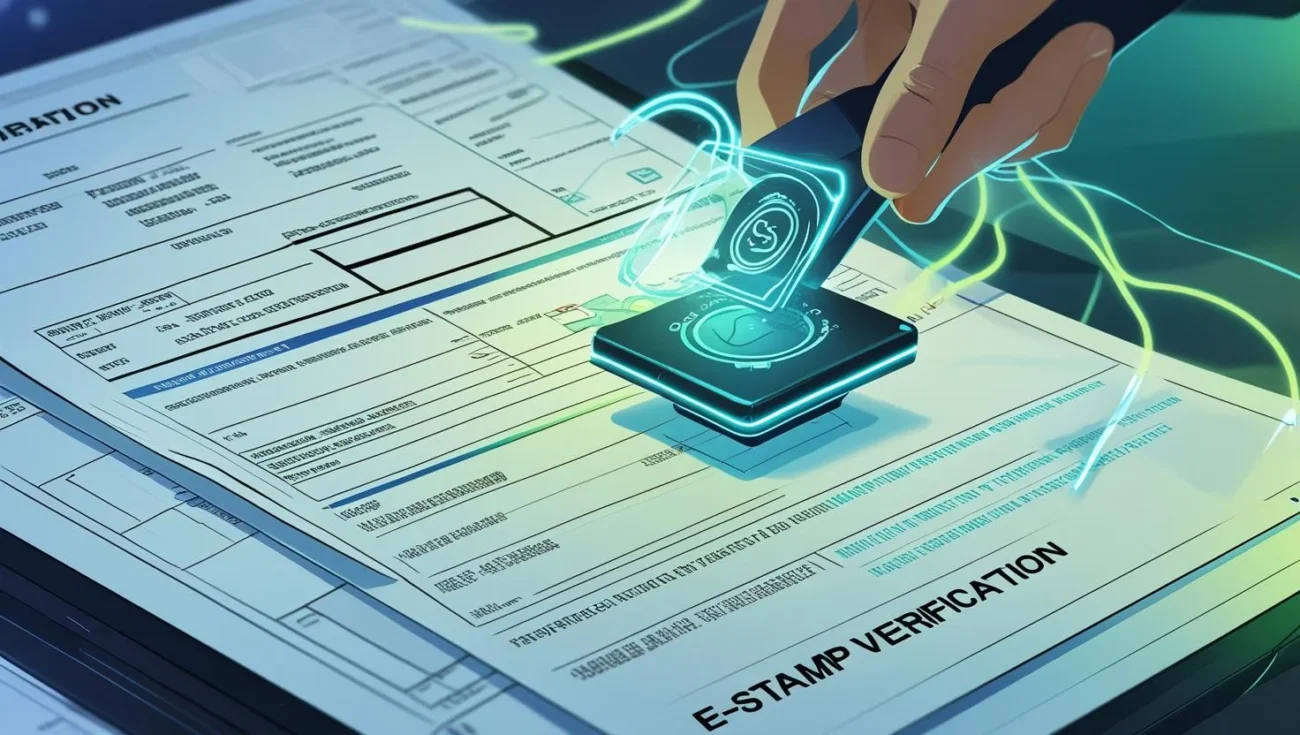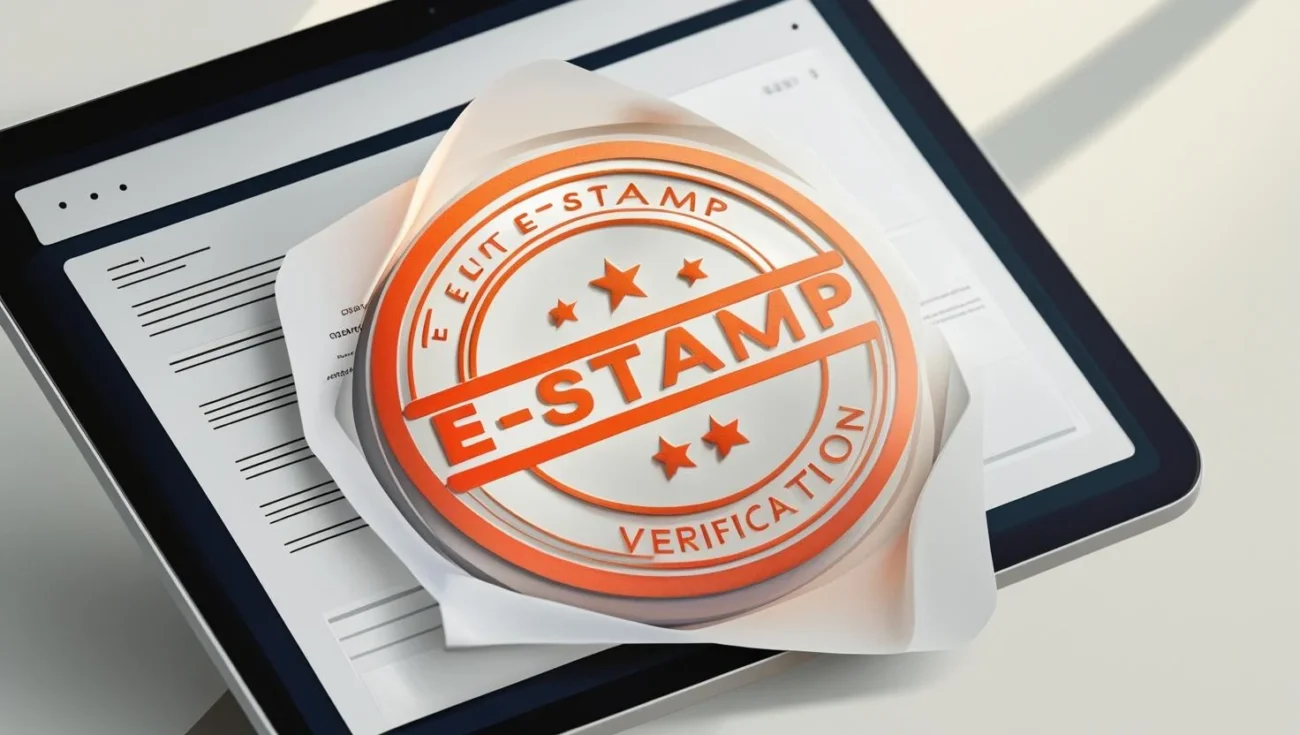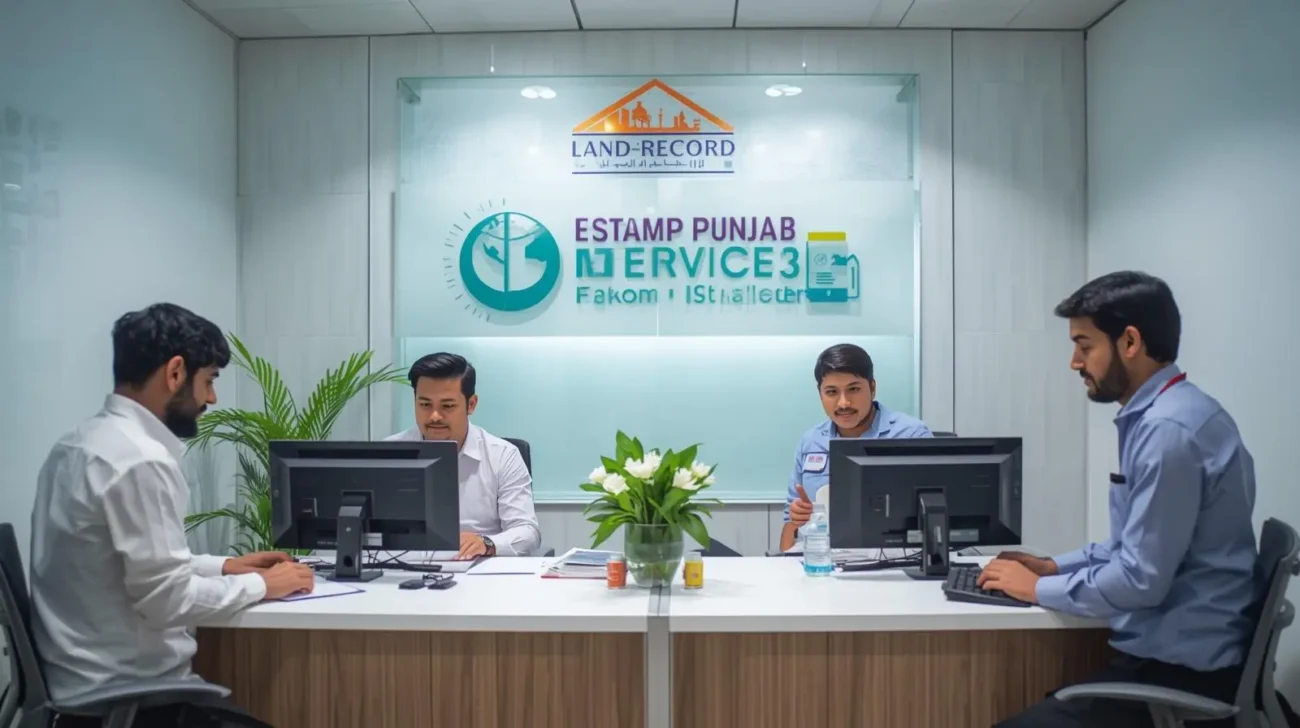Digitization of public services in Pakistan has certainly led to visible gains in efficiency, transparency and accountability. The most notable advancement has been the digitization of stamp paper issuance through the implementation of e-Stamping. While printed paper stamp papers have become a rarity, the government now has safe and secure electronic means to issue and administer stamp duties. Key to this change is e-stamp verification or ensuring that each e-stamp is valid, traceable and tamper-proof.
e Stamp verification is an integral part of modern legal, property and business worlds. Whether it is sale deed, lease deed, contract for business or an affidavit the checking of e-stamp gives immunity to an individual and firms from fraud, forgeries and pointless litigations.
What is e-Stamp Verification?
In simple terms, e stamp verification is the process used to confirm whether an electronically issued stamp paper is genuine. A unique Certificate Number is present on each of the e-stamps issued by the government, as well as specific details of the e-stamp, such as the name of the purchaser, Details such as the document’s purpose, the stamp duty amount, and the issuing district are provided. For verification, that information needs to be correct and contained on the government’s mothership database, not fraudulently changed or used again.
In a way that creates a digital checkpoint. Once an e-Stamp is rissued, individuals who have access to the document can verify its authenticity in seconds online. This represents an additional level of confidence when using digital documents and is a useful weapon against document fraud.
Why is Verification Necessary?
One would require e stamp verification because the documents that are issued/signed with stamp papers are very sensitive documents. There are documents, including sale deeds, mortgage papers, affidavits, agreements and contracts, which have always had legal sanctity. If the stamp paper is not valid, it is forged or a duplicate then the entire document could be considered invalid and parties may suffer various types of legal liabilities as well as financial losses.
Prior to the advent of e-stamps, the physical stamp paper system was largely abused by people in Pakistan. The mechanical process of issuing these imp-stamps made it difficult to keep track of the numbers and backdaited, fake and stolen stamp papers were being circulated in the black market. Most of these worries have been mitigated with the introduction of e-Stamping by the government, but to make the trust cycle airtight, consumers needed a trustworthy verification mechanism. e Stamp verification means the end of paper-culture, and no one would have to accept documents on trust: they can verify it vis- -vis the official records by checking the e-Stamp, thus making the system more transparent, with less room for corruption or fraud.

Where and How Verification of e-Stamp Done?
A leading e-Stamping and system for verification is in place in Pakistan in the province of Punjab. PITB E-Stamping System The e-Stamping project of the Board of Revenue with the collaboration of Punjab Information Technology Board (PITB) has been introduced in Punjab in order to handle the taxes system in a better controllable way. This control is entirely integrated into this system being accessible in the official portuguese site: estamp.punjab.gov.pk.
To check e Stamp Punjab, one needs to open the portal first and select the verification option. The system would ask for some detail from the e-Stamp certificate ((number, date of issuance or district) and CNIC number of the buyer. After the information has been submitted, the portal queries the government’s database to verify that the stamp entered in the portal exists, and returns a response indicating whether the stamp is authentic.
This real-time confirmation is incredibly efficient and can be accessed by anyone — property buyers, real estate agents, lawyers, court officials, or even regular individuals. Checking an e-Stamp becomes possible under the new system which was not the case under the old mechanism and thus reconfirms information security.
Features of E Stamp Verification Systems
The outstanding effectiveness of e stamp verification in Pakistan particularly evident in Punjab is a result of the robust technological infrastructure developed by the Punjab Information Technology Board (PITB). Centralized record management is one of the most important elements of the system. Once an e-Stamp is created, its information is recorded in a central database. This record becomes the verified source of truth, which cannot be changed after issuance.
It is also noteworthy for its real-time processing. Verification checks are performed in real time, cutting out delays and enabling users to check the authenticity of documents right up until the point of signing or submission – even just seconds beforehand. It is an open platform and available around the clock without needing a special login or permission, making the process very easy to use.
The last, but not least, security is our top priority in the system design. Our platform uses encrypted data communication, strict access protocols, and internal audit trails to ensure that unauthorized persons cannot access the system or manipulate the data. Moreover, many e-Stamp certificates have a QR code. The code can be easily scanned by someone equipped with a smartphone, and the link will direct the user directly to the verification page. This step further simplifies the process and attempts to reduce human error.
Differences Between Provinces
In terms of differences between provinces, it worth noting that while Punjab has the most complete and functioning e-stamping and verification system in the country, other provinces are only slowly digitizing the process. Whereas Sindh has already digitized stamp papers, the system does not operate in the full range and is limited; moreover, the public system of verification is entirely different.
Khyber Pakhtunkhwa and Balochistan have both been announcing e-Stamping, but no fully functioning system has been implemented. Thus borrowers must know which platform to use depending on the province’s location. In Punjab’s case, e-Stamping for the non-judicial stamp papers over Rs. 1,000 is mandatory, and e stamp verification is ubiquitous in the property offices, banks, and courts. Therefore, it is expected that other provinces will adopt similar practices in the near future with Punjab’s experience being a prototype.
Challenges in e-Stamp Verification
The challenges of the e stamp verification system in Pakistan are numerous. Lack of awareness is a severe issue because plenty of people do not know that e-Stamps must be verified before using them. Hence, the majority of the population continues to employ intermediaries who do not always verify the bonds.
Internet accessibility is another barrier. In low-connectivity settings or among low digital literacy users, some users may face challenges in reaching the portal and interpreting verification results. Public education is needed to make sure people understand how, and why, to use the system, despite its simplicity.
There is also the unfinished business of national integration. It is because of the fact that e-Stamping is being managed by the respective provinces and there is no single country-wide system for verification. This has so far precluded verification across provinces, and has created a headache for users of documents from different areas.

Who Should Use e-Stamp Verification?
e-Stamping check is crucial for any person whether he is related to legal sector or finance sector. Property buyers and sellers, especially, should never enter a deal without first ensuring the e-Stamp affixed is genuine. The retired lawyers and notaries who draft affidavits, leases, or contracts also have to scrutinize the stamps before presenting in court or submitting to law office room as notary-judicial.
Banks and established financial institutions also are adopting e stamp verification to search records as part of the loan disbursement process or when lending against securities. The various governmental departments, registrars, and legal clerks also use validated e-Stamps while handling the cases, registrations, or transfers.
Even those who receive documents bearing an e-Stamp — for example tenants, business partners and witnesses — can and should use the portal to confirm the legitimacy of the stamp on their own. The sooner you act the more certainty you will have, and you tend to avoid future arguments.
Future of E Stamp Verification in Pakistan
E stamp verification in Pakistan holds promising potential for the future. While the provinces that lagged behind have already given e-stamping and verification systems the nod, it is hoped that the rest will soon follow suit, with digital administration now set to become a focus area. The future scope of work may include mobile apps for easy access, biometric authentication for any high-value transactions and integration with going live national databases such as land records or NADRA.
There is even talk of introducing blockchain-based verification, a system that would enable tamper-proof digital records and push the threat of forgery down to near zero. Raising public awareness through campaigns, workshops, and helpdesks will also be crucial to citizens making good use of the system.
The more comfortable people get with online transactions and online documents, the more demand there will be for verified, secure, and traceable documents. e-Stamp verification is not just a technical utility – it is instead part of a larger reform and integrity movement towards legal sanctity, technology accountability and citizen faith.
Final Thoughts
In today’s busy digital world, time and attention spans are shorter, and people want to access information faster and easier. Pakistani e Stamp verification offers fast, transparent, and secure way to verify that a stamp.paper is real, properly issued, and legally usable. From the purchase of property to the filing of court cases, the usage of verified e-Stamps helps safeguard everyone involved, and fortify the dependability of Pakistan’s legal and finance infrastructure.
Whether it’s a legal officer, property buyer, officer, you yourself or just anybody else who has received a stamped document, it will only take you a few seconds to ensure that it is original via e-stamp verification, and this can save you a potential headache in the future. As the system progresses further and grows, it is destined to become a landmark of authentic digital documentation in the country.


